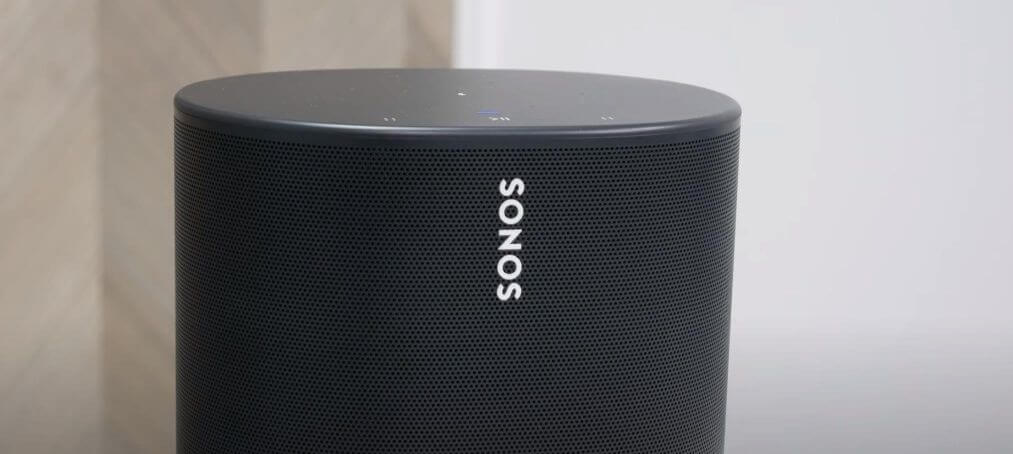Sonos Move Smart Wi-Fi & Bluetooth Speaker Review
Today we’re talking about the new Sonos Move. In 2005 Sonos started selling home speakers with the goal of people being able to easily listen to anything they want, in any room they want. Well, 15 years later, they become the home audio company for the masses, and now they’re setting their sights on the great outdoors.
They’ve pretty much cornered the connected home audio market for good reason. They make the best-connected home audio speakers with their Wi-Fi connection protocol. But as Sonos slowly converted listeners over to wireless connections based on Wi-Fi, the old standard of Bluetooth has grown over the years with steady reliability and performance improvements.
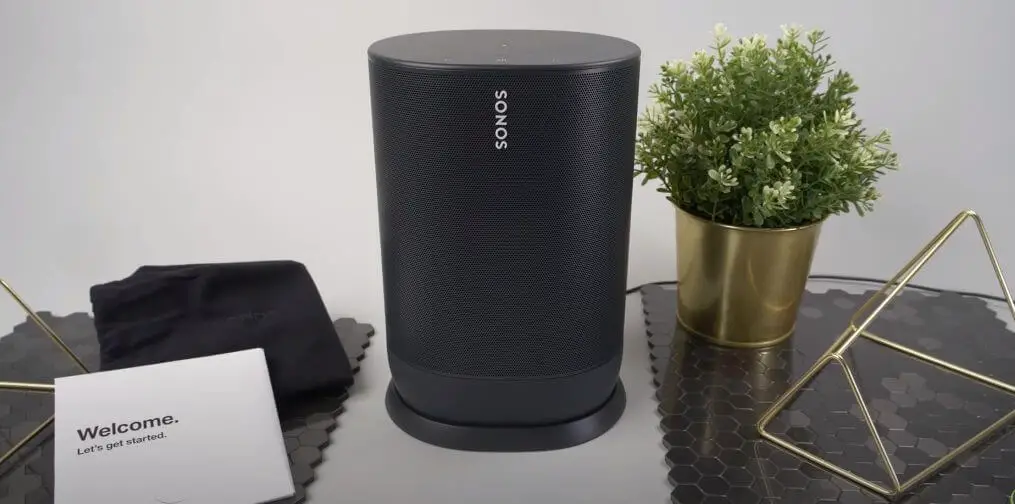
Up to this point, if you’ve picked Sonos for your home audio ecosystem, you would be stuck close to the house with it. All Sonos speakers relied on your home Wi-Fi network to talk to your source and each other. Maybe more importantly, unless you had a long extension cord, you’re not taking your music very far. But now we have this Sonos Move, a portable connected speaker that packs with a battery for ten hours of playtime, and for the first time, built-in Bluetooth 4.2. This speaker was designed to be picked up and taken with you, well, at least to the backyard.
Design
So you might have noticed that the Sonos move is quite a large speaker in the portable speaker category, coming in at 24 centimeters high, 16 centimeters wide, and 12.6 centimeters deep. It also weighs three kilograms. But it does come with a handy carry handle, making it a lot easier to move it from place to place.
The Sonos Move takes on a cylindrical shape, and it’s got a metal grill that goes almost around the Sonos Move. It also comes with a rubber base, which makes it grip on whichever surface it’s on. So if I try to move the Sonos Move, it isn’t easy. This is what makes it different to maybe lighter portable speakers might slide around a lot.
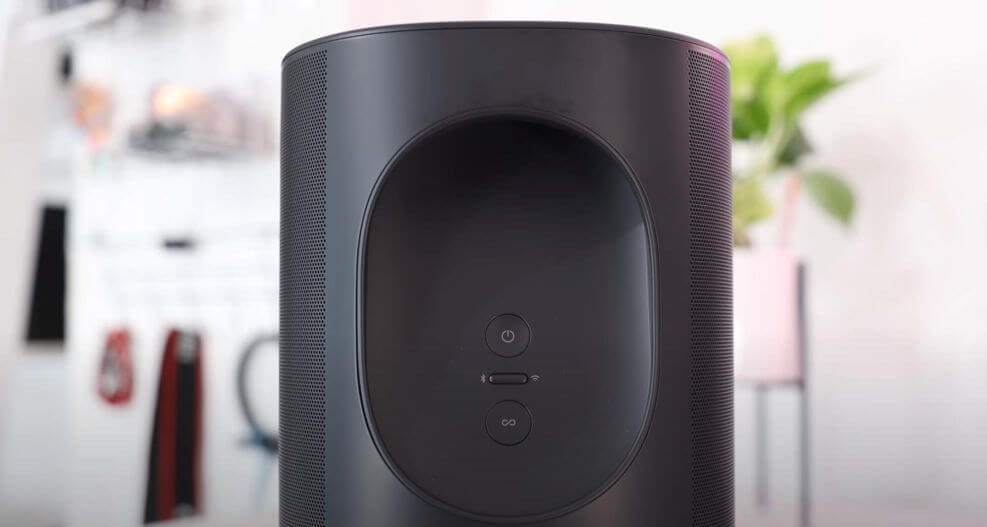
On the top, we’ve got a slightly rearranged touch control panel with the microphone array in the center as well as the microphone privacy button. There are the volume controls and the play/pause at the front of the speaker. If we look at the back of the speaker, you can see that you’ve got the first-ever power button for Sonos, so you can turn it off and save the battery.
You’ve also got a Bluetooth and Wi-Fi switching button, so whenever you’re at home, you can use Wi-Fi, while there is no Wi-Fi you can use it for Bluetooth. You’ve got a join button, which we’ve seen on more recent Sonos speakers for connecting to your Wi-Fi wirelessly. There’s no Ethernet on this speaker because obviously, now it supports Bluetooth. If you do lose Wi-Fi or drop Wi-Fi you’ve always got Bluetooth to fall back on.
Finally, you’ve got a USB C on the bottom there for charging, which we will cover in more detail later on.
What’s inside the Sonos Move? Well, there’s one downward firing tweeter that will handle all of the vocals and the higher frequencies. You’ve got one mid-woofer that is going to handle the mid-range and the bass. And the cone is quite a lot larger than the so nice one, so it’s going to give you a bigger sound.
Control
Controlling the music on Sonos has never been simpler. Because it supports Bluetooth, Airplay 2, Spotify connects, and voice, including Amazon Alexa and Google assistant. That means you can voice control your entire Sonos Network. Alternatively, you can use the Sonos app like before, and you can use that to import any of your streaming services and control them all from one central place. A new feature to the Sonos move is Auto True Play, which means that it can automatically optimize its sound for the room or the place it’s in. How will it do that? It will use its inbuilt microphones instead of using the microphones on your iOS device this time. Whenever it’s been stationary for more than 15 seconds, it will acoustically adjust so you know you’re getting the very best sound for wherever you are.
Charging and Battery
Let’s talk about charging the Sonos Move. The box will come with a handy charging stand, which is slim and lightweight. It’s a nice bit of kit. You plug this into main power, and if you want to charge the Move, you will dock it in here like that. Then the Move should come up with an orange status light to show you that it’s charging.
It is fine to permanently keep the Sonos Move on the charging base if you wanted to use it as a home speaker. It doesn’t affect the battery life in the long term. There’s another way of charging the speaker if you didn’t want to take this charging base with you. On the back, you’ve got a USB C port, which allows you to use any USB C cable that you might have.
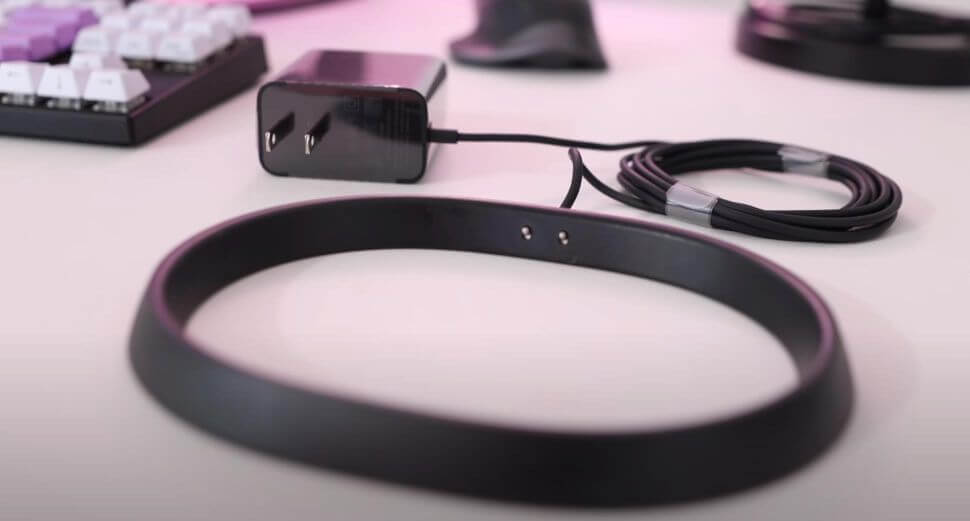
Being Sonos’s first-ever battery-powered speaker, I wanted to put this to the test. The first test I did was how long does the battery last? Sonos claims that it lasts around ten hours at a moderate volume. A moderate volume, of course, is open to interpretation. I played the Move at 50% volume from 100% charge until it died. The speaker died around 10 hours and 15 minutes in the test, not far off Sonos’s estimation. Of course, volume, heat, Bluetooth, and pausing, and other factors will also impact how long the unit lasts using its battery.
I did another test where I played the speaker for a day using Bluetooth and also using Wi-Fi. I found that there was no drastic difference between using Bluetooth and Wi-Fi. There was the only sort of around a few percent difference in it. I also did another test about how long it took to recharge from entirely dead. When I put this on the charging base, it only took a minute for it to come back on, and automatically it said it was on 7%. It got to 30% within 20 minutes, and it got to a hundred percent in just over an hour and a half. So it’s got a really quick recharge time.
You can check how much battery you have left as long as you’re connected to Wi-Fi. You can access the Sonos app; you can see the result. There was no other way to check other than the SONOS app via Wi-Fi access. But you’re not always going to have Wi-Fi, so it’s a little bit annoying.
They have a status light when the battery is in low battery, showing red or amber at the front. Another thing to know is that the battery can be charged around 900 times or used for around three years before the battery is likely to need replacing.
The battery, though, is not under warranty and are purchased separately. In terms of cost, I’m not quite sure what it’s going to be. If you leave the Move powered on and using the battery, but you’re not playing music on it, it will go into a low-power state as other Sonos speakers do. It will last around 120 hours before the battery dies completely. I would recommend you do, though, is if you know you’re not going to be using the Move for a more extended period, use the power button and turn it off completely. That way, you can save as much battery as possible.
Weather Proof
Moving on to the weatherproof test. The Sonos Move is rated to IP56 standard, which is relatively high. It means it’s resistant to some aspects like water, snow, UV rays, extreme temperatures, and there’s a long list of things that are that it’s resistant to. I tested it in heavy rain. It was found the music carried on playing. But do make sure that you do give it a quick wipe afterward. Otherwise, it might leave a few stains. Also, to note, it’s not water submersible, so you wouldn’t want to be floating it on a swimming pool. And again, the charging stand is not weatherproof. Only the Move is weatherproof.
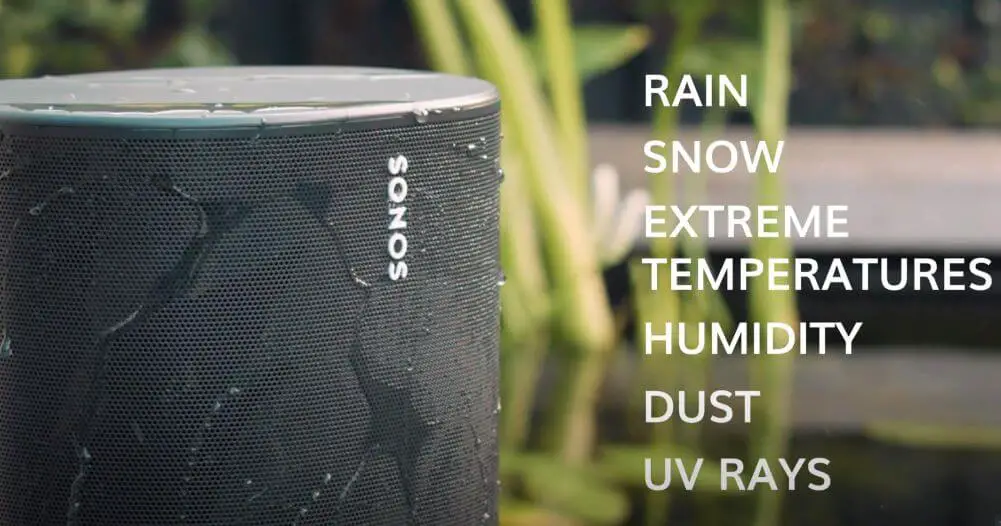
Other Features
Sonos also claimed that the Move has a wireless extender built-in. That means it’s claimed to have a more excellent wireless range than your phone.
Another great feature of the Sonos Move is the Auto True Play feature. How did it work with previous speakers? You would have needed to walk around your room for around 60 seconds using your iOS device, and it would use the microphones on that device to acoustically optimize the speakers for whichever room they were in. With Auto True Play, whenever the speaker is positioned in the same position for more than 15 seconds, it will use that information in the first 15 seconds, using its inbuilt microphones to optimize the sound quality.
Can you stereo pair the Sonos Move?
Yes, you can get stereo pair of the Sonos Move with another Sonos Move. But you cannot use these for rear surrounds to a Sonos beam, Playbar, or Playbase.
Can you pair Sonos Sub with the Move?
Unfortunately, you can’t pair Sonos Sub with the Move because that would cause problems. Like if you take the Move out of the room while they are in pair, the sub would be playing on its own, and it’s just going to sound awful.
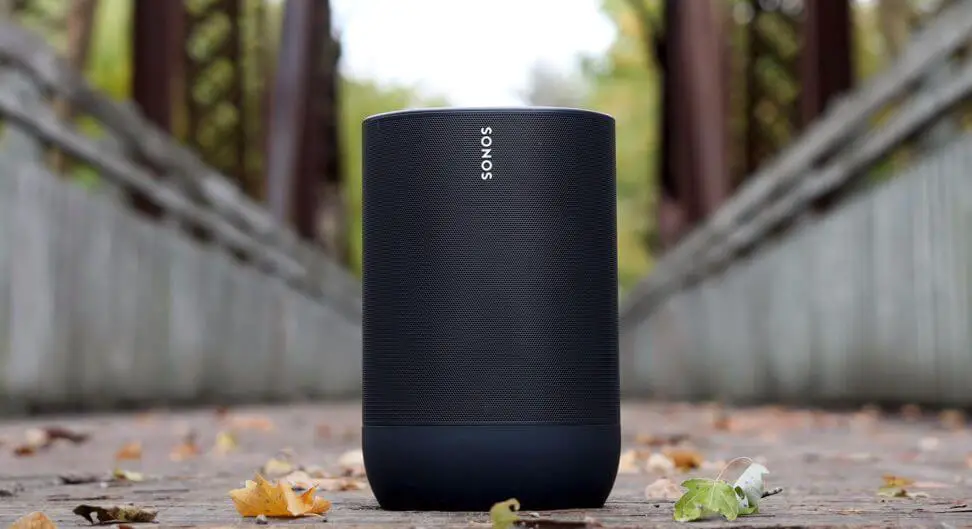
Conclusion
This is the first time a speaker has ever combined Bluetooth and Wi-Fi into the same speaker without relying on a mains power connection when using Bluetooth. This is a truly portable speaker despite it being slightly larger than what we’re used to seeing in the portable speaker category. I think this is a great looking speaker and should stand the test of time for many years to come.
Particularly Sonos enthusiasts will love this speaker because they can use it with their existing Sonos speakers or take it away from home. But also, if you’re new to Sonos, this makes a great first speaker. So if you’re not sure which room you want to put it in or try out the Sonos ecosystem, this is a great first speaker for you. If you’re serious about sound, want to unlock great sound not only in your home but use it elsewhere as well, then the Sonos Move is a brilliant choice, and we think it will win awards in the future.
